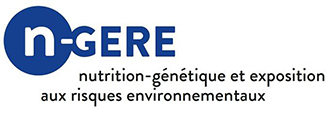With over 62,000 students and 7,000 employees, University of Lorraine is spread over 49 sites. It has 60 research laboratories and Academic faculties, schools & institutes, including 11 engineering schools, in all disciplines. The Shanghai ranking places it close to 200th in the world rank and 9th in France.
Join an institution that promotes team spirit and offers a quality of life at work!
800x600 Normal 0 21 false false false FR X-NONE X-NONE MicrosoftInternetExplorer4 /* Style Definitions */ table.MsoNormalTable {mso-style-name:"Tableau Normal"; mso-tstyle-rowband-size:0; mso-tstyle-colband-size:0; mso-style-noshow:yes; mso-style-priority:99; mso-style-parent:""; mso-padding-alt:0cm 5.4pt 0cm 5.4pt; mso-para-margin:0cm; mso-pagination:widow-orphan; font-size:10.0pt; font-family:"Times New Roman",serif;}
Description of the structure of laboratory
The person will be recruited within the NGERE (Nutrition Genetics and
Exposure to Environmental Risks) laboratory (https://ngere.univ-lorraine.fr/), a joint research unit of the University of
Lorraine and INSERM (U1256) whose research topic concerns the study of
interactions between genetics, epigenomics and metabolic and/or nutritional
factors on normal or pathological ageing. The role and impact of environmental
factors on these mechanisms and the resulting pathologies are of concern within
the unit topics. Among these factors, the presence of chemical pollutants in
the environment to which humans are exposed is one of the factors considered,
particularly in terms of the consequences on the neurological and mental health
of the individual.
Le rôle et l’impact des facteurs environnementaux sur ces mécanismes et les pathologies qui en découlent sont au centre des préoccupations de l’unité. Parmi ces facteurs, la présence de polluants chimiques dans l’environnement auxquels l’Homme est exposé est un des facteur pris en compte dans la thématique de l’unité, et plus particulièrement en termes de conséquence sur la santé neurologique et mentale de l’individu.
Scientific context of the position
The person recruited for this post-doctoral position will be part of the BrainSol research program financed by ADEME and conducted in partnership with INERIS. The person will have to carry out a data search concerning the neurotoxicity of pollutants from 3 families of chemical compounds (metals, organochlorine solvents and polycyclic aromatic hydrocarbons). More specifically, it will involve establishing a textual database for each of these families, analyzing the data contained in these databases to establish a toxicological profile of the substances in each family and then constructing AOP (Adverse Outcome Pathway) formalisms to establish the link between the known or supposed mechanisms of action of these substances and the neurotoxic effects that they may generate. The ultimate goal of the work will be to reconcile the AOPs constructed for each substance with each other in order to identify possible mechanistic and therefore toxic interactions between several substances and families of pollutants, and also with exposure data concerning these pollutants so as to be able to estimate the level of exposure at which the risk of triggering a toxic effect for the brain exists. Finally, the resulting constructs will be applied to the estimation of neurotoxic risk in three different types of populations (adult, pregnant woman and young child).
Tasks and required skills:
Under the supervision of the project leaders, the person will have to :
1) build and validate a systematized methodology for textual data mining (publications, expert reports, conference proceedings, databases, etc.) and document quality assessment to extract the data deemed relevant concerning the neurotoxic effects of the pollutants covered by the BrainSol research program,
2) complete for each substance the existing toxicological profile in the INERIS database with the data available concerning the neurotoxicity of the substance and its potential effects on neurodevelopment, 3) apply the AOP building methodology to each substance from the OECD AOP wiki database and building tools such as AOP-helpfinder, 4) bring together the AOPs built to identify key stages (key events) within the AOPs which could be common to the different constructions so as to be able to establish an estimate of the neurotoxic risk that exposure to the mixture of these substances could represent, and 5) correlate the validated AOPs to the results obtained in the first part of the BrainSol project in terms of exposure to define a neurotoxic risk assessment methodology which would make it possible to move from a descriptive aspect constituted by the AOPs (qualitative AOPs) to a tool for estimating the level of exposure above which exposure to one or more substances could represent a risk for the brain (quantitative AOPs). The person required for this position will therefore be positioned at the intersection of the fields of neuroscience and brain development, toxicology related to the environment and data mining and modelling.
This position is therefore intended for people with experiences in the field of neurosciences and/or toxicology related to the environment. Experience in the field of mining and modeling textual data applied to the assessment of risk to the brain from exposure to environmental pollutants will be appreciated.
Minimum PhD graduation or “doctorat” equivalency to apply.
Informations sur le contrat
- Contract duration: 18 months
- Position to be filled and start of the contract as soon as possible
- Job salary : from 2271 € per month (gross salary)
- Access to a rich and wide course catalog
- Location of the post : Vandoeuvre-lès-Nancy, Lorraine, France
Pour candidater
CV and cover letter should be sent to:
- drh-recrutement-contact@univ-lorraine.fr copy caroline.reppert@univ-lorraine.fr
- before 27th of February 2023
- mentionning the offer reference: 148JGHH




